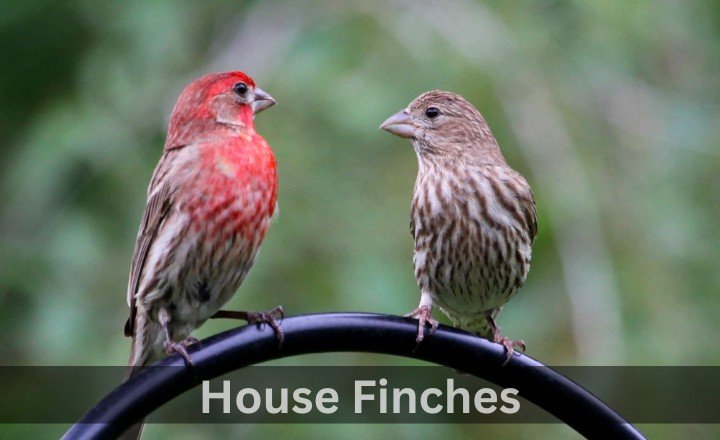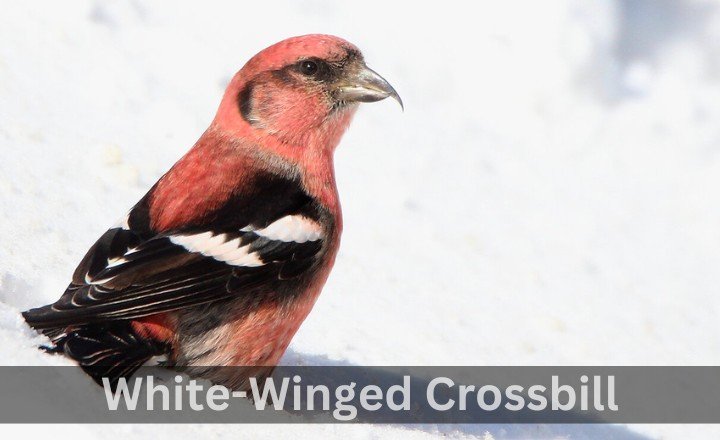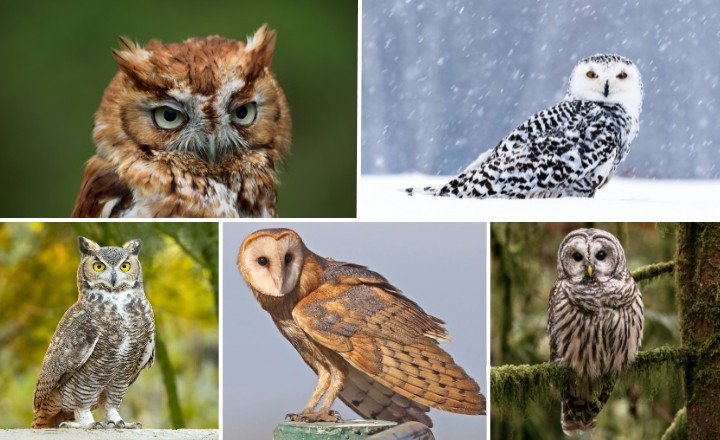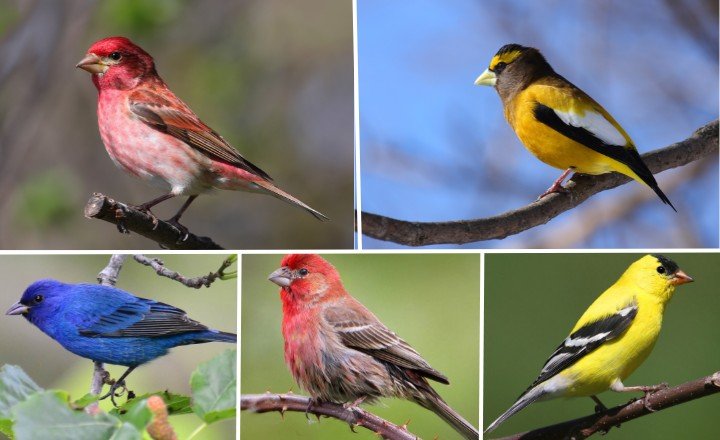5 Types of Finches in Illinois (With Pictures)
There’s something undeniably mesmerizing about the sight of a finch flitting through the trees, its vibrant plumage, and a splash of color against the backdrop of Illinois’ lush landscapes. With over 200 species gracing our state, these small songbirds add beauty to our local ecosystems and provide endless fascination for those who take the time to observe them. As a birdwatching enthusiast, I admire them and always find ways to learn more about them.
In this article, I invite you to join me in exploring the various types of finches in Illinois. Whether you’re an experienced birdwatcher or just beginning your journey into avian appreciation, understanding these charming birds can deepen your connection to the natural world around you.
What are Finches?
First, we will learn some of the basics of these birds so that we can understand their types more accurately and easily!

Finches are small to medium-sized birds belonging to the Family Fringillidae, they are renowned for their vibrant plumage and melodious songs. Found across various habitats worldwide, from woodlands to urban areas, these avian wonders come in over 200 species. Each species showcases unique adaptations for example, Darwin’s finches in the Galápagos Islands exemplify evolution in action, demonstrating how environmental factors can lead to remarkable changes in beak size and shape to better exploit available food sources.
These birds are the same size as the Small White Birds and Brown Birds. Also, their size can be sometimes the same as some of the Green Birds.
Types of Finches in Illinois
Illinois is home to a variety of finch species, each bringing a splash of color and melodious song to the state’s diverse ecosystems. The House Finch, easily recognizable by its cheerful chirping and vibrant red plumage in males, has made itself at home in urban settings as well as rural areas. These adaptable birds are often spotted flitting between bird feeders, using their dexterous beaks to crack open seeds with ease. Interestingly, House Finches do not migrate extensively rather, they prefer to remain year-round residents unless food sources dwindle.

American Goldfinch
The American Goldfinch is distinguished by its vibrant yellow plumage in the male during the breeding season and presents a remarkable visual feast against the backdrop of green foliage. During winter, these birds don a more subdued olive-brown hue, reminding us of nature’s practicality their ability to adapt and blend into different environments can be seen as a survival strategy. This seasonal transformation not only showcases their resilience but also serves as a fascinating case study for birdwatchers and environmental enthusiasts alike.

Goldfinches are acrobatic fliers, often seen hanging upside down while feeding on seeds from thistles and sunflowers. Unlike many other songbirds that nest early in spring, they delay nesting until late summer when seeds are plentiful this timing speaks to their exquisite understanding of resource availability.
House Finches
House finches are remarkable little birds known not only for their vibrant plumage and melodious songs but also for their intriguing adaptability to urban landscapes. Most of these birds have several similarities with Red Birds such as the size or appearance. Originating from the western regions of North America, these small finches have successfully expanded their range due to human activities, demonstrating a fascinating interplay between wildlife and civilization.

Unlike many species that struggle with habitat loss, house finches thrive in cities and suburbs, finding refuge in everything from grocery store awnings to backyard feeders. Their diverse diet sets house finches apart they are as comfortable nibbling on seeds as they are pecking at fruit or scavenging for scraps. This omnivorous appetite enables them to survive in varied environments, allowing them to become year-round residents where other birds might migrate.
White-Winged Crossbill
The White-Winged Crossbill is easily recognized by its distinctive crossed bill and striking plumage and is a vivid emblem of boreal forests. This species has adapted uniquely to its coniferous habitats, particularly thriving on the seeds of spruce and pine trees. Unlike many other birds that forage from branches, these crossbills have developed an exceptional skill for prying open cones with their specialized beaks an evolution fueled by their diet’s challenges.

Their feeding habits not only showcase their remarkable adaptation but also play a vital ecological role, aiding in seed dispersal and influencing forest dynamics. What truly fascinates ornithologists is the White-Winged Crossbill’s nomadic lifestyle. Unlike resident bird species that remain tied to specific territories year-round, they roam vast areas in search of suitable food resources often following cone crops as they ripen across regions.
Pine Siskin
It is a small finch known for its charming demeanor and vibrant plumage, offering fascinating insights into avian adaptability. Its streaked brown body is punctuated by striking yellow wing bars, making it an enchanting sight as it flits between tree branches. Unlike many birds that strictly adhere to their seasonal behaviors, the Pine Siskin showcases a unique nomadic lifestyle influenced by food availability.

Their vocalizations reveal much about its social nature. Their characteristic calls a series of high-pitched twitters to function not just as communication but also as a method of flock cohesion. These Small Birds possess a keen sense for locating food sources and can often be seen feeding alongside Chickadees or Goldfinches at backyard feeders.
Red Crossbill
Its small finch with a distinctively unusual beak, has captivated ornithologists and birdwatchers alike. Its beak is uniquely adapted to pry open the tough cones of conifer trees, allowing this bird to access seeds that many others can’t reach. This adaptation not only reflects evolution’s creative problem-solving but also influences the species’ behavior and habitat preferences. Crossbills are often found in pine forests where their vibrant calls resonate among the branches, adding a melodic quality to the woodland ambiance.

There are several different call types or “morphs” of Red Crossbills, each associated with specific cone sizes from various conifer species like lodgepole and Ponderosa pines. These morphs have developed through localized adaptation, showcasing nature’s intricate nuances in biodiversity.
Conclusion
Illinois is home to a diverse array of finch species, each contributing uniquely to the state’s vibrant ecosystems. From the charming American Goldfinch, with its striking yellow plumage, to the less common but equally fascinating Pine Siskin, all finches in Illinois are fun to learn, these birds showcase remarkable adaptations that allow them to thrive in various habitats. Birdwatchers and nature enthusiasts can find joy in observing these finches throughout different seasons as they engage in their typical behaviors and vocalizations.
FAQs
Do House Finches Live in Illinois?
Yes, they are now considered permanent residents in Illinois, they are native to North America America, but they spread to Illinois from the Eastern USA.
What is the Yellow-Black Finch in Illinois?
It’s an American Goldfinch, its body is yellowish, and they have black wings, and the lower part of its tail is white. It’s a common winter and summer migrant in Illinois.
What is the Rarest Finch?
The Mangrove Finch C is by far the most rarest finch among them all. Its also called the Rarest of Darwin’s finches. Their body color is rocky brown, and they are very much small in size.
Where are Finches Most Commonly Found?
These birds are common everywhere just like a sparrow. You can spot them in settled habitats such as city parks, residential backyards, forest edges, and farms. They fly in noisy groups so they are hard to miss out







